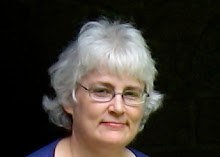
Some of my earliest work as a physician assistant had been in the Yakima valley of eastern Washington state. It was here in 1980 I found my first work in a migrant clinic, and began working among the campesinos from Mexico. Most had recently come from the mountains of Michoacan, to find work picking the cherries, the peaches and the apples from the orchards that flowed over the valley.
From them I learned Spanish and a different culture and worldview. From some of the older women I learned about curanderas (the traditional healer-shamans of Mexico who blend indigenous Indian medicine with the healing arts of the Spaniard conquistadores). I learned about the curanderas who cleared mal de ojo (evil eye) and treated invidia ( the envy disease) and did limpias ( cleansing the human energy field with prayers and branches of rosemary brushed top to bottom). It was a remarkable view into an ancient healing world. I had just completed my medical training and was still very locked into my western medicine culture. I did no further explorations of alternative healing at that time. But seeds were planted in me of another vision of healing.
It was twenty years later, in 2000, that those seeds finally sprouted, growing in me a vision of the kind of healer I wanted to be. I started to read a book by Elena Avila, called The Woman Who Glows in the Dark. In her book, she talked about her own long journey from an RN with a master’s degree in nursing, on the fast track to academia and well-paid work in western medicine, to tracking back into her family roots in
 Mexico to become a curandera.
Mexico to become a curandera.She described a daily work where she sat down and talked at length with clients - a plactica sort of talking when you open your heart and spill out your worries and the person listens to you in a deep way. There is no judgment, only a deep listening presence and someone like a grandmother/elder who holds you with respect and love, helping you find your way out of your own particular briar patch.
Then Elena went on to talk about using massage, using healing hands in a caring way on suffering bodies. She talked about her relationship with healing herbs, and the powerful presence of plants as medicine. using herbs to help. Sometimes she would go cut fresh rosemary branches from her garden and use it to sweep out the person’s energy field, clearing away the constrictions, the blocks, the funky foreign energy. Throughout this all, Elena acts as a kind of hollow bone through which the wind of Great Spirit can flow.
Elena described her work as Yerba Buena medicine - a kind of loving medicine given by an elder woman- an aunt, a grandmother, giving you time to tell your story, always holding you in deep respect and love, working with the elements of Nature and with Great Spirit to help you mend your broken places.
As Elena wrote about her work, I could feel the deep presence of the Sacred. I finished the book, clapped it shut, and said: “Now that’s the kind of healer I want to be”.
So that’s where I got the name for my healing practice. And that is the kind of healer I strive to be.
Janet
Resources:
Photo of Manuel Guiterrez picking apples in Yakima: Yakima Herald
Photo of the Curandera of Patzcuaro: Mirenchu Fernandez
Photo of Yerba Buena by Ben Legler.

Yerba buena (Clinopodium douglasii) is a rambling aromatic herb of western and northwestern North America, ranging from maritime Alaska southwards to Baja California Sur. The plant takes the form of a sprawling, mat-forming perennial and is especially abundant close to the coast. It is an aromatic plant used as herbal medicine worldwide. The word Yerba Buena is Spanish for “good herb”.





No comments:
Post a Comment